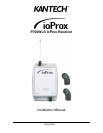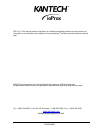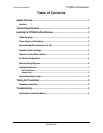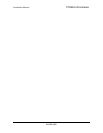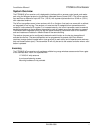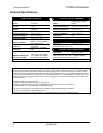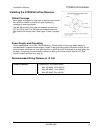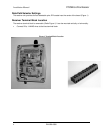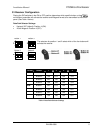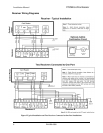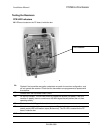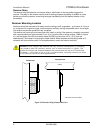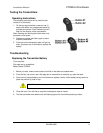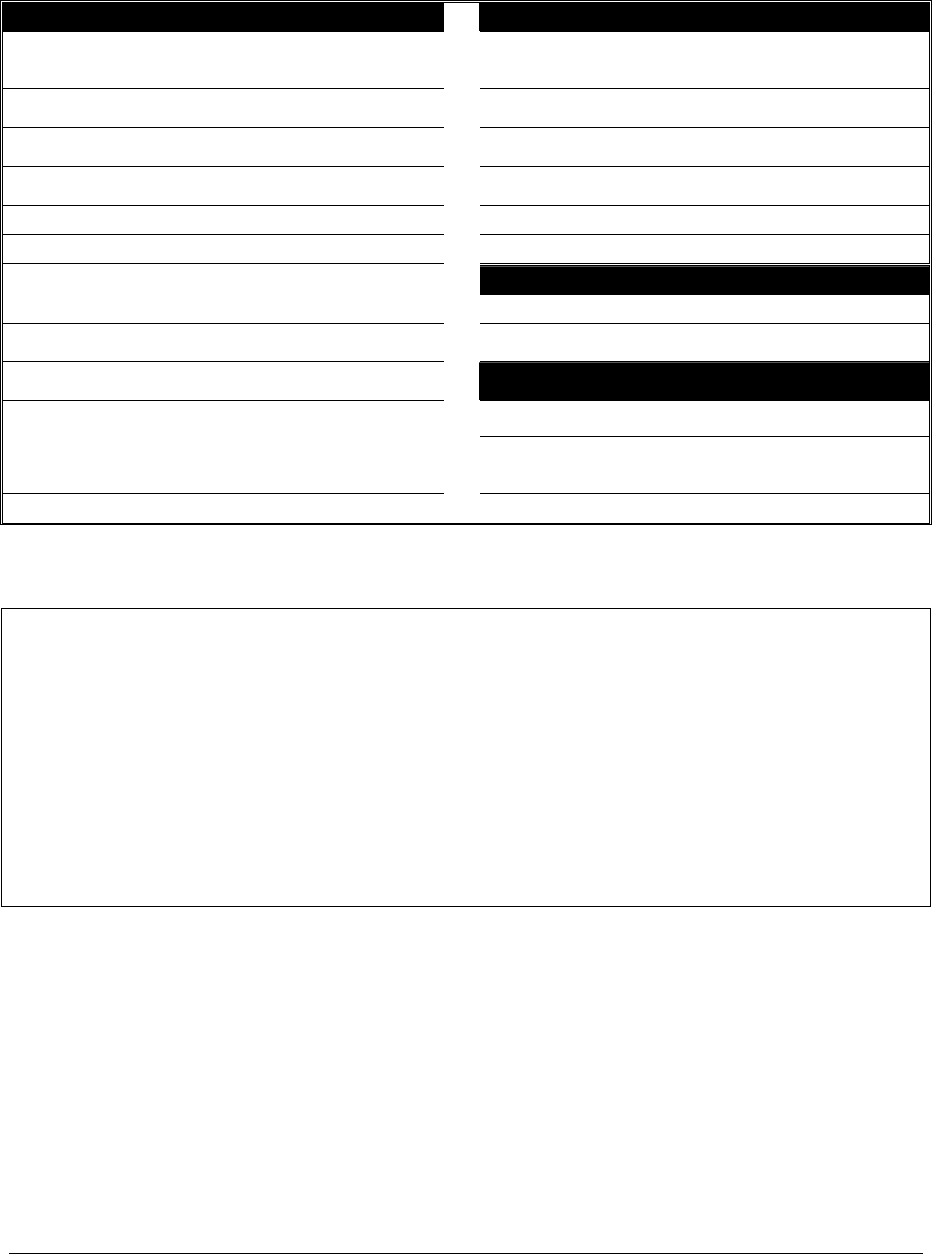
Installation Manual P700WLS ioProx Receiver
DN1628-0806
2
Technical Specifications
P700WLS ioProx Receiver
P72WLS/P74WLS Transmitters
Power:
12-24 VDC
Power:
CR2032 3V lithium battery,
included (3 year average
lifetime)
Current:
50mA (stand-by) 100mA
(peak)
Operating temperature: 0°C to 70°C (32°F to 158°F)
Output:
XSF or 26-bit Wiegand
selectable
Dimensions (HWD) cm: 7.30 x 3.81 x 1.59
Operating temperature:
-30°C to 68°C
(-22°F to 155°F)
Dimensions (HWD) in: 2.88 x 1.50 x 0.63
Dimensions (HWD) cm: 19.21 x 13.02 x 4.14
Certification: FCC
Dimensions (HWD) in: 7.56 x 5.13 x 1.63
P-WLS-A1 Standard Whip Antenna
Enclosure material:
Polycarbonate (HB) with UV
stabilizer, weather-resistant,
IP56, NEMA 4X rated
Read range:
Up to 30 m. (100 ft.)
Frequency: 433.92 MHz
Note: Antenna P-WLS-A1 may be remotely installed using
coaxial cable up to 4.5 m. (15 ft.)
Cable type:
3 twisted pairs, unshielded
cable
P-WLS-A2 Power Dipole Antenna
Read range: Up to 45 m. (150 ft.)
Maximum distance from
controller at 12 VDC:
152 m (500 ft) with 18 AWG
112 m (369 ft) with 20 AWG
76 m (248 ft) with 22 AWG
Note: Antenna P-WLS-A2 MUST be installed using coaxial
cable up to 4.5 m. (15 ft.), RG1 1/U (Belden ref#8213)
coaxial cable is recommended. Optional
Certification: FCC
Note: This equipment has been tested and found to comply with the limits for a Class B digital device, pursuant to part 15 of the
FCC Rules. These limits are designed to provide reasonable protection against harmful interference in a residential installation.
This equipment generates, uses and can radiate radio frequency energy and, if not installed and used in accordance with the
instructions, may cause harmful interference to radio communications. However, there is no guarantee that interference will not
occur in a particular installation. If this equipment does cause harmful interference to radio or television reception, which can be
determined by turning the equipment off and on, the user is encouraged to try to correct the interference by one of more of the
following measures:
Reorient or relocate the receiving antenna.
Increase the separation between the equipment and receiver.
Connect the equipment into an outlet on a circuit different from that to which the receiver is connected.
Consult the dealer or an experienced radio/TV technician for help.
This device complies with part 15 of the FCC rules. Operation is subject to the following two conditions:
This device may not cause harmful interference, and
This device must accept any interference received, including interference that may cause undesired operation.



